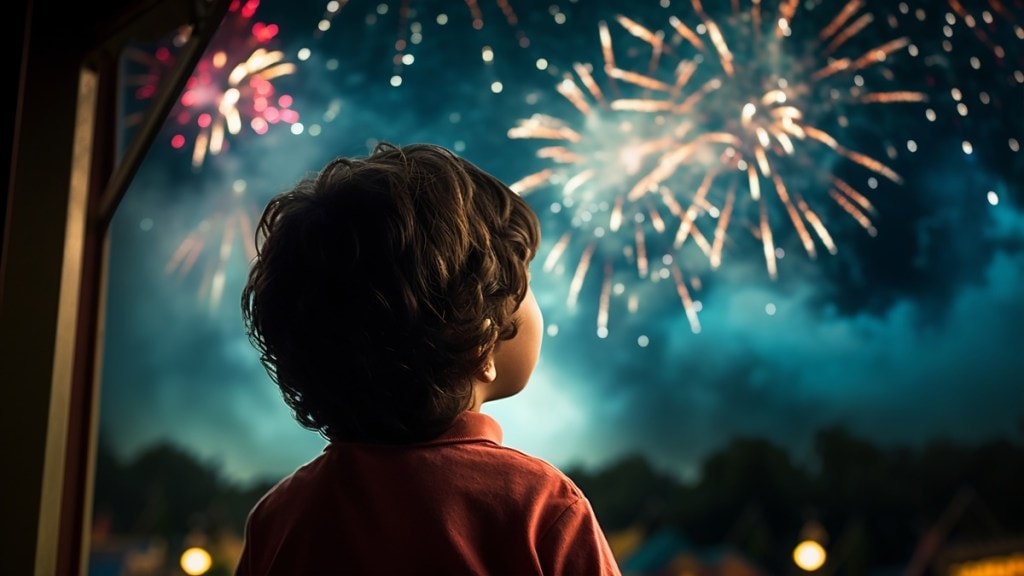Diwali 2024: The festive season of Diwali is known for its lighting, celebratory fervour and feeling of joy in the air. Firecrackers were an integral part of the festive season, though with stricter regulations and growing awareness about pollution, their use has got curbed. However even today on every Diwali, eye doctors keep busy trying to manage cases of firecracker induced injury or burns on the face and eyes.
According to Dr Digvijay Singh, Director Noble Eye Care, Gurugram, children are the most prone for these injuries as they are less alert, often distracted, unaware of the dangers and more exposed being shorter in height and arm length making their face closer to the firecracker.
“Firecracker injuries can be due to direct impact of the bursting firecracker leading to a mechanical injury or due to heat from the explosion causing a thermal injury or indirect impact due to flying object or hand impact by a friend or bystander,” Dr. Singh told Financial Express.com.
Why are children at greater risk?
Ignorance and Recklessness: Children are easily captivated by the colors, sounds, and excitement fireworks generate. Such curiosity often prompts them to go swimming in firecrackers or play with them dangerously. Where they do not recognize the worth of many tools or concepts, this enhances possibilities of accidents.
Height Factor: Elderly persons due to their height are quite safe from most of the blasting fireworks which usually blast near ground level or can also approach ground level. Many such firecrackers like sparklers or small ground crackers are very low in blast radius thus being more prone to harm the children nearby.
Inattention: At times of celebratory events and gatherings, adults are sometimes unable to watch over children closely. Children may experiment during the excitement of the festival or celebration by lighting fireworks or trying to use them like grown-ups do. Under direct supervision, they can’t be protected against dangerous situations.
What are some common eye injuries from firecrackers?
Most of the eye injuries from firecracker’s eye trauma are usually mild irritations to severe trauma that could cause blindness. Eye injuries from firecrackers and varieties of the deafening crack include ‘soma typical types the following:
- Corneal Abrasions: The particles fired off by firecrackers can be sharp enough to cut across the surface of the eye resulting in pain and over-dependence on the cornea or eye for vision.
- Thermal Burns: Burning from the sparks and heat of fireworks can affect the sensitive tissues seen around, or within, the eye.
- Chemical Burns: Fireworks, as a matter of fact, do contain some harmful chemicals which may cause some serious irritation or damage if any of them were to come in contact with the eyes.
- Penetrating Injuries: Eye penetrating injuries can result from splash of detonation times or pieces from an explosion getting into the eye which may lead to loss of sight or even total blindness.
“No Indian celebration–be it Shivratri, Holi, Dasara or Diwali–can ever be complete without the explosion of colorful firecrackers. Crackers make the diwali celebrations more pleasurable but also have its disadvantages such as causing harm to children. Injuries of the eyes arising out of use of crackers are
usually irreversible but with strict guidelines and the right supervision of parents, these tragedies can be avoided. This Diwali let us focus on safety as this would help make it possible to enjoy the occasion safely for all, specially the children,” Dr. Singh explained.
How to prevent these injuries?
A child should not be allowed to burn firecrackers in an unsupervised manner. An adult should always be present and alert to ensure that the child is following safe practices including burning age appropriate firecrackers, keeping enough arm length and distance from the firecracker, avoiding bundling of firecrackers, pointing air borne firecrackers away from humans and burning in a safe open space without any inflammatory hazards. Eyes may be protected by use of safety glasses, he said.
What to do if my child gets injured?
In the event of a firecracker injury, move the child to a safe well-lit spot. Make sure there is no active flames on the clothes. Wash the injured area with cool clean water and apply cold compresses over areas of face and eyelids with any suspected burns. If the child is verbal ask him if he feels any burning or pricking sensation in his eyes and if he can open the eyes and see with either eye.
“If the child is not able to open their eyes, wash the eyelids from outside, apply cool ice wrapped in a cloth over the eyes and take child to the ophthalmologist or emergency room of a hospital near you. Keep the child from rubbing eyes as that may worsen the injury. Lubricant eyedrops may be applied frequently in the eyes while waiting for a consultation. The ophthalmologist would evaluate and guide the next steps which may may vary from observation, use of eyedrops, eye patching and even surgery if the injury is severe or the integrity of the eyeball is compromised,” Dr. Singh told Financial Express.com.
Safety first
Keep a first aid kit including some cotton gauze, sterile water, antibiotic ointment and ice pack ready during these festival days. It should be handy and quickly accessible by all family members.
“Avoid crackers which are non-branded or of poor quality and use them within the safety parameters of distance and placement. Avoid projectile based firecrackers. By taking a few simple precautions, and being prepared, we can ensure our children have a safe and happy Diwali,” he added.


